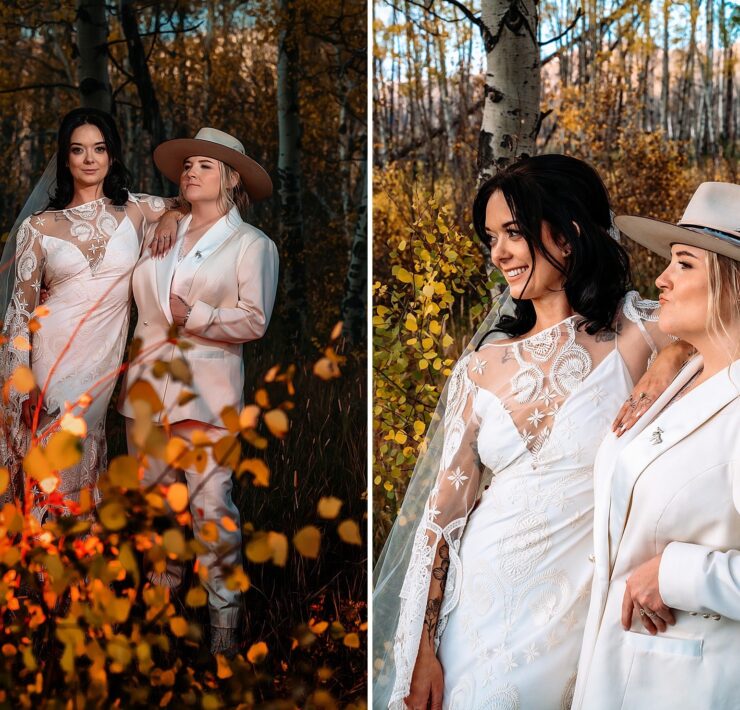‘Monogamish’ and the gray area between monogamy and polyamory

Lauren is a marketing and social media coordinator for a…
I’ve been reporting on sexuality for Out Front for almost a year now, but I still come across concepts that are completely new to me. Recently I’d been half-heartedly listening to student presentations during a CU Boulder Queer Rhetoric class – the last class session of the semester when students presented creative argument papers – when one group presentation covered one of those concepts: the term .
Though I recall gay sex advice columnist and activist Dan Savage wrote an editorial about “monogamish” marriages, I’d never looked into it. Savage describes the idea of being mongamish as “mostly monogamous, not swingers, not actively looking.”
I’ve been in a monogamous relationship for nearly five years now (shocking from Out Front’s sexuality reporter, I know). There is no “ish” about our relationship – we’ve never opened it up to other parties or modified how we define what we are.
 Maybe I’ve been living my life too much “inside the box.” Call me old–fashioned, but I’ve seen relationships black–and–white affairs. I guess I’ve assumed that being in a relationship it means you want to be with that one person, and so you enter a monogamous agreement. I also recognized that one partner doesn’t cut it for some people, so they either play monogamous and cheat, or intentionally adopt a polyamorous lifestyle. But after doing a bit of research and asking around, I’ve discovered that there’s a lot more than those ends of the spectrum.
Maybe I’ve been living my life too much “inside the box.” Call me old–fashioned, but I’ve seen relationships black–and–white affairs. I guess I’ve assumed that being in a relationship it means you want to be with that one person, and so you enter a monogamous agreement. I also recognized that one partner doesn’t cut it for some people, so they either play monogamous and cheat, or intentionally adopt a polyamorous lifestyle. But after doing a bit of research and asking around, I’ve discovered that there’s a lot more than those ends of the spectrum.
“Monogamish” struck a chord with me, mostly because I don’t understand it. What’s the difference between a monogamish relationship and an “open relationship?” Is it only for married couples? Is it found outside of LGBT relationships? How do you distinguish what’s right for your relationship with your partner?
Joshua Pierce, a friend, LGBT activist and recent graduate from the Metropolitan State University of Denver, has been in a relationship with the same man for nearly a year now. I’ve seen the two of them have their spats from time to time, and I’ve also known them each to engage in encounters with other men. Nonetheless, they come home to each other at the end of the day.
“I guess the arrangement the two of us have is what you’d call ‘monogamish,’” Pierce said. “We’re faithful to each other in the sense that we’re honest about what’s going on. We don’t just say, ‘OK, have a good time sleeping with everybody in town and we’ll see what happens.’ We acknowledge that our commitment is to one another, regardless of what our sex life entails.”
Pierce said he and his partner don’t consider themselves in an “open relationship,” and describes a “deeper understanding of what’s going on” with the two of them.
“When we wake up in the morning, I don’t roll over and say, ‘I think I’ll fuck that twink barista that works at our Starbucks today,’” Pierce said. “That’s not what we’re doing. I’m in love with my partner and don’t want anything between the two of us to change. But if we both feel like we’re experiencing a lull in our relationship, then we’re OK to satisfy that need elsewhere.”
Pierce and his partner help “monogamish” make sense, but after a few more hours of research I found myself reeling over polyfidelitous relationships.
It’s another of many ways people do relationships and sex. In polyfidelitous relationships, all members – three or more partners – are considered equal in the relationship. According to the Polyamory Society, members of the polyfidelitous group are sexually exclusive; they don’t hook up outside the group. Although I’m in neither a monogamish nor a polyfidelitous relationship, I have developed a deeper respect for those who are.
Is monogamy going out of style? Maybe it is to an extent. But maybe there are just many more legitimate options now, which we’re more open to talk about as parts of human nature, relationships and curiosity.
What's Your Reaction?
Lauren is a marketing and social media coordinator for a Denver nonprofit. In her spare time she enjoys writing feature articles for Out Front, as well as blogging about breaking news and local and national LGBT happenings.










